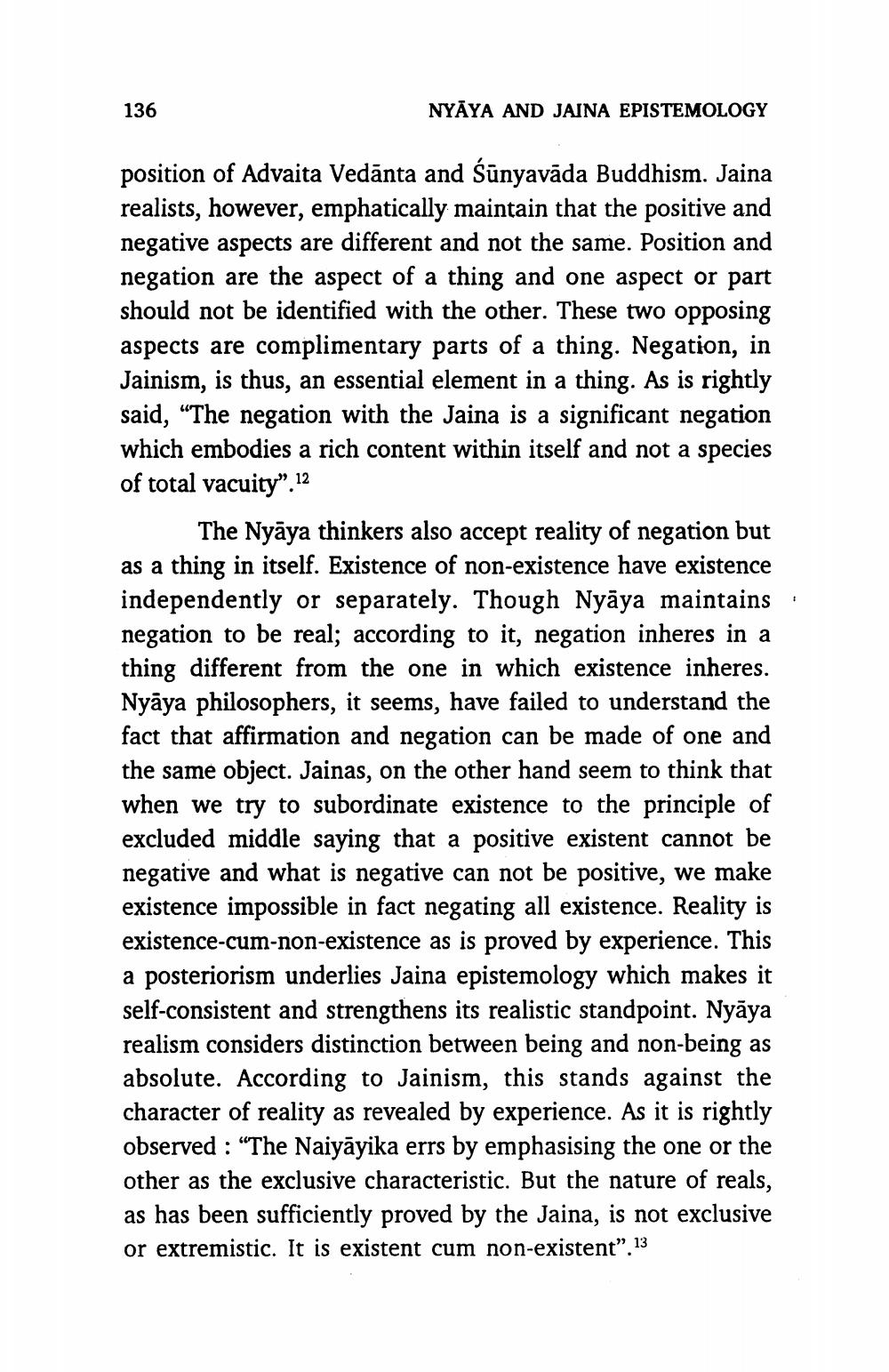________________
136
NYAYA AND JAINA EPISTEMOLOGY
position of Advaita Vedānta and Sūnyavāda Buddhism. Jaina realists, however, emphatically maintain that the positive and negative aspects are different and not the same. Position and negation are the aspect of a thing and one aspect or part should not be identified with the other. These two opposing aspects are complimentary parts of a thing. Negation, in Jainism, is thus, an essential element in a thing. As is rightly said, “The negation with the Jaina is a significant negation which embodies a rich content within itself and not a species of total vacuity".12
The Nyāya thinkers also accept reality of negation but as a thing in itself. Existence of non-existence have existence independently or separately. Though Nyāya maintains : negation to be real; according to it, negation inheres in a thing different from the one in which existence inheres. Nyāya philosophers, it seems, have failed to understand the fact that affirmation and negation can be made of one and the same object. Jainas, on the other hand seem to think that when we try to subordinate existence to the principle of excluded middle saying that a positive existent cannot be negative and what is negative can not be positive, we make existence impossible in fact negating all existence. Reality is existence-cum-non-existence as is proved by experience. This a posteriorism underlies Jaina epistemology which makes it self-consistent and strengthens its realistic standpoint. Nyāya realism considers distinction between being and non-being as absolute. According to Jainism, this stands against the character of reality as revealed by experience. As it is rightly observed : “The Naiyāyika errs by emphasising the one or the other as the exclusive characteristic. But the nature of reals, as has been sufficiently proved by the Jaina, is not exclusive or extremistic. It is existent cum non-existent”. 13




